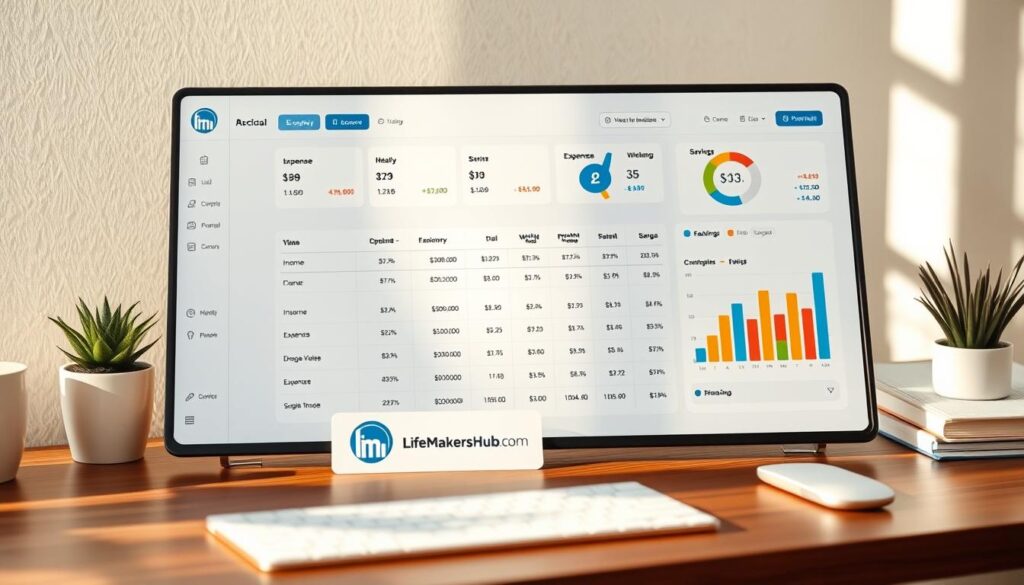How to Achieve Financial Freedom Before 30 | Expert Guide
Building a secure future starts with smart decisions today. Many young adults dream of living life on their own terms, free from financial stress. With the right strategies, this dream can become a reality. Starting early is the key to unlocking long-term success. By saving and investing wisely, you can set yourself up for a comfortable retirement and a fulfilling life.
Financial literacy plays a crucial role in shaping your journey. Understanding concepts like compound interest and budgeting can make a significant difference. For example, starting to invest at age 25 can yield a retirement corpus 2.5 times larger by age 65 compared to starting at 35, assuming a consistent annual return of 7%1. This highlights the power of early action.
Discipline and consistency are essential. Saving at least 20% of your income for long-term goals is a widely recommended practice1. Additionally, managing debt and building an emergency fund can provide stability during unexpected challenges. With the right mindset and tools, achieving independence is within reach.
Key Takeaways
- Start saving and investing early to maximize compound interest.
- Save at least 20% of your income for long-term financial goals.
- Build an emergency fund covering 3-6 months of living expenses.
- Understand the importance of financial literacy for long-term success.
- Manage debt effectively to maintain a healthy financial profile.
Financial Foundations for Early Independence
Mastering your money early sets the stage for lifelong independence. Understanding your finances is the first step toward building a secure future. By focusing on key areas like financial literacy and healthy money habits, you can create a strong foundation for long-term success.
The Value of Financial Literacy
Financial literacy is the cornerstone of independence. It helps you make informed decisions about your money. For example, tracking recurring expenses like subscriptions or daily coffee habits can reveal areas where you can save. Small changes add up over time, creating a significant impact on your financial health2.
Setting clear financial goals is another essential aspect. Whether it’s saving for a home or building an emergency fund, having a plan keeps you focused. The 50/30/20 budget rule—allocating 50% for needs, 30% for wants, and 20% for savings—is a practical framework to follow2.
Establishing Healthy Money Habits
Healthy money habits are the building blocks of financial freedom. Start by tracking your spending to identify patterns. This simple step can help you cut unnecessary costs and redirect funds toward your goals.
Here’s a breakdown of common daily expenses and their annual impact:
| Expense | Daily Cost | Annual Cost |
|---|---|---|
| Coffee | $5 | $1,825 |
| Streaming Service | $15/month | $180 |
| Fast Food | $10 | $3,650 |
By understanding these costs, you can make smarter choices. For instance, brewing coffee at home could save you over $1,800 a year. These savings can be redirected toward investments or an emergency fund2.
Financial independence isn’t about deprivation—it’s about making intentional choices. With the right knowledge and habits, you can take control of your finances and build a future free from stress.
How to achieve financial freedom before 30
Your financial journey begins with defining what truly matters to you. Clear goals provide direction and help you stay focused on what’s important. Whether it’s saving for a home, building an emergency fund, or planning for retirement, your goals should reflect your unique vision and income level3.
Defining Your Personal Financial Goals
Start by asking yourself what you want to accomplish. Are you aiming to pay off debt, save for a big purchase, or invest for the future? Tailoring your plan to your age and earning stage ensures you maximize each year’s potential. For example, starting to save at 25 can lead to a retirement corpus of $1 million by 65, assuming consistent contributions3.
Small things like monthly contributions can grow into a substantial fund over time. The key is to set measurable objectives. Instead of saying, “I want to save more,” specify, “I will save $200 every month.” This clarity makes it easier to track progress and stay motivated.
Here’s a comparison of vague goals versus measurable ones:
| Vague Goal | Measurable Goal |
|---|---|
| Save money | Save $5,000 this year |
| Invest more | Invest 20% of my income monthly |
| Reduce debt | Pay off $3,000 in credit card debt in 6 months |
Actionable strategies are essential. Write down your goals and review them regularly. Studies show that individuals with written goals are 42% more likely to achieve them4. This simple step can guide every financial decision you make.
Remember, your goals should evolve as your income and priorities change. Regularly reassessing them ensures you stay on track and adapt to life’s challenges. With a clear plan, you can turn your financial dreams into reality.
Creating a Practical Budget and Expense Plan

Taking control of your finances begins with a clear plan and consistent effort. A well-structured budget helps you allocate resources effectively, ensuring you meet both short-term needs and long-term goals. By tracking your spending and adjusting your habits, you can build a foundation for financial stability.
Tracking Your Spending Effectively
Understanding where your money goes is the first step toward financial control. Start by collecting receipts and categorizing expenses for a month. This process reveals spending patterns and highlights areas where you can cut back5.
Budgeting apps can simplify this task. Tools like Mint or YNAB automatically track transactions and categorize them, giving you a clear picture of your finances. Regularly reviewing these reports helps you stay on track and make informed decisions6.
Here’s a breakdown of how to categorize expenses:
| Category | Examples | Percentage of Income |
|---|---|---|
| Needs | Housing, utilities, groceries | 50% |
| Wants | Dining out, entertainment | 30% |
| Savings/Debt | Emergency fund, investments | 20% |
Accounting for both planned and unexpected expenses is crucial. Allocate funds for emergencies to avoid dipping into savings or relying on credit cards. Experts recommend saving at least $500 for small emergencies and building a fund covering 3-6 months of essential expenses5.
Regularly reviewing your budget ensures it adapts to changing circumstances. Quarterly check-ins allow you to adjust allocations based on income changes or new financial goals6. This proactive approach minimizes stress and keeps you on the path to financial independence.
Building a practical budget is an investment in your future. By tracking spending diligently and making adjustments as needed, you can achieve greater control over your finances and reduce reliance on emergency funds.
Managing Debt and Using Credit Wisely
Smart debt management is the cornerstone of long-term financial health. Controlling what you owe and how you use credit can make or break your financial future. High-interest debt, like credit card balances, can quickly spiral out of control if not addressed promptly7.
Total consumer debt rose more than 4.4% from 2022 to 2023, with credit card debt growing by 17.4%7. This highlights the importance of staying vigilant about your spending and repayment habits. Avoiding excess debt protects your assets and ensures you’re not paying unnecessary interest fees.
Avoiding Excess Debt and High Interest Fees
High-interest credit cards can be a major financial burden. For example, carrying a balance on a card with a 20% APR means paying $200 in interest annually for every $1,000 owed7. To avoid this, prioritize paying off high-interest balances first. This strategy, known as the avalanche method, saves more money over time7.
Using credit wisely also means keeping your credit utilization ratio low. Experts recommend staying below 30%, with 10% being ideal for optimal credit score management8. This not only helps your account history but also reduces the risk of accumulating unmanageable debt.
Here are actionable steps to manage debt effectively:
- Pay off high-interest balances first to minimize interest costs.
- Monitor your credit utilization ratio to maintain a healthy score.
- Avoid unnecessary purchases that could lead to debt accumulation.
- Consider balance transfer cards with 0% introductory rates to reduce interest fees7.
Building a positive credit history is equally important. Paying bills on time and in full helps avoid late fees and penalties, which can negatively impact your credit score8. Regularly monitoring your credit report ensures accuracy and helps detect errors or fraud8.
By managing debt wisely and using credit responsibly, you can protect your assets and build a solid financial foundation. These practices not only reduce stress but also set you up for long-term success.
Smart Banking Strategies and Asset Protection

Smart banking strategies can transform your financial future. By choosing the right accounts and tools, you can simplify money management while safeguarding your assets. This approach ensures your funds work for you, not against you.
Selecting the Right Bank Accounts
Choosing the right bank accounts is a crucial step toward financial stability. Look for accounts with low fees and beneficial balance requirements. This way, you avoid unnecessary charges and maximize your savings9.
Separating everyday spending from long-term savings is another smart move. For example, use a checking account for daily expenses and a high-yield savings account for your emergency fund. This separation protects your financial health and ensures you’re prepared for unexpected costs10.
Automating transfers to savings accounts can significantly boost your savings rate. Studies show that individuals who automate their savings save up to 30% more than those who don’t9. This small change can make a big difference over time.
Shielding Your Investments and Assets
Protecting your investments starts with understanding potential risks. Hidden fees and excessive charges can erode your returns. Always review account terms and conditions to avoid surprises10.
Monitoring your accounts regularly is another effective way to safeguard your assets. Check for unauthorized transactions and ensure your balance meets requirements. This proactive approach minimizes risks and keeps your finances secure9.
Here’s a quick guide to shielding your investments:
- Choose accounts with low fees and transparent terms.
- Automate savings to build a safety net for the future.
- Review your accounts monthly to catch errors or fraud.
- Separate spending and savings to maintain financial health.
By implementing these strategies, you can protect your assets and build a stronger financial foundation. Small steps today lead to significant rewards tomorrow.
Building a Solid Savings and Emergency Fund

A solid emergency fund is your safety net during life’s unexpected turns. Whether it’s a medical bill, car repair, or sudden job loss, having savings ensures you’re prepared. Experts recommend saving three to six months’ worth of essential expenses to cover emergencies11.
Yet, studies show that 60% of Americans can’t cover a $1,000 emergency, and 27% wouldn’t survive a month without their job12. These statistics highlight the urgent need to prioritize savings. Starting small, like setting aside $5 a day, can make a big difference over time.
Automating Savings for Consistent Growth
Automating your savings is one of the most effective ways to build a financial cushion. By setting up automatic transfers, you ensure consistent contributions without relying on willpower. Research shows that people who automate their savings save 20% more annually than those who don’t11.
Here’s how small daily or monthly contributions add up:
| Daily Contribution | Monthly Savings | Annual Savings |
|---|---|---|
| $5 | $150 | $1,825 |
| $10 | $300 | $3,650 |
| $20 | $600 | $7,300 |
Treating savings like a monthly bill ensures it becomes a non-negotiable part of your budget. This mindset shift helps you stay consistent, even when spending temptations arise.
Overcoming savings challenges starts with taking action today. Whether it’s cutting back on unnecessary spending or redirecting a portion of your paycheck, every step counts. Remember, building an emergency fund isn’t about perfection—it’s about progress.
Learning the Essentials of Investing for the Future

Investing wisely today can pave the way for a secure tomorrow. Whether you’re just starting or looking to grow your portfolio, understanding the basics is crucial. By making informed decisions, you can build wealth and reduce reliance on debt over time.
Understanding Investment Options
There are various ways to invest, each with its own benefits and risks. Stocks, bonds, mutual funds, and ETFs are popular choices for beginners. Stocks offer high growth potential but come with higher risk, while bonds provide steady income with lower volatility13.
Mutual funds and ETFs allow you to diversify your portfolio, reducing risk by spreading investments across multiple assets. For example, investing in a mutual fund that tracks the S&P 500 can provide exposure to hundreds of companies with a single purchase14.
Here’s a quick comparison of investment options:
| Option | Risk Level | Potential Return |
|---|---|---|
| Stocks | High | High |
| Bonds | Low | Moderate |
| Mutual Funds | Medium | Medium |
| ETFs | Medium | Medium |
Maximizing Compound Interest Over Time
Starting early is one of the most effective ways to grow your wealth. Compound interest allows your investments to grow exponentially over time. For instance, investing $500 monthly starting at age 25 can result in $4.3 million by age 65, assuming an average return of 11%14.
If you wait until age 35 to start, the same monthly investment would yield only $1.4 million by age 6514. This highlights the importance of taking action today, even with small amounts.
Here are some tips to maximize compound interest:
- Start investing as early as possible to take full advantage of growth.
- Reinvest dividends and interest to accelerate returns.
- Stay consistent with contributions, even during market fluctuations.
Employer-sponsored plans, like 401(k)s, are excellent tools for building wealth. Many employers offer matching contributions, which is essentially free money. For example, if your employer matches 3% of your salary, contributing at least that amount ensures you’re maximizing your benefits14.
Balancing risk and reward is key to long-term success. Diversify your portfolio to minimize losses and focus on steady growth. By understanding your options and starting today, you can set yourself up for a financially secure future.
Leveraging Employer Benefits and Tax-Efficient Contributions
Maximizing employer benefits is a powerful way to enhance your financial security. Many companies offer valuable perks, such as retirement plans and health savings accounts, that can significantly boost your long-term balance. By taking full advantage of these opportunities, you can make smarter financial decisions and build a stronger foundation for the future15.
Taking Advantage of Matched 401(k) Plans
One of the most impactful benefits employers offer is a matched 401(k) plan. This is essentially free money that can accelerate your retirement savings. For example, if your employer matches 3% of your salary, contributing at least that amount ensures you’re maximizing your benefits15.
Here’s how it works: If you earn $60,000 annually and contribute 3%, your employer adds another $1,800 to your retirement fund. Over time, this can grow significantly, thanks to compound interest. Making this decision early can set you up for long-term success15.
To get started, follow these steps:
- Review your employer’s retirement plan details, including matching policies.
- Enroll in the program and set up automatic contributions to ensure consistency.
- Monitor your account regularly to track growth and adjust contributions as needed.
Tax-efficient contributions are another key aspect of maximizing your benefits. Pre-tax retirement accounts, like 401(k)s, reduce your taxable income while growing your savings. For instance, contributing $10,000 annually can lower your taxable income by the same amount, saving you money on taxes15.
By leveraging these strategies, you can create a balance between immediate financial needs and long-term goals. Every decision you make today contributes to a more secure tomorrow.
Fostering Career Growth and Financial Self-Investment
Your career growth directly influences your financial stability and long-term success. By investing in your skills and education, you can unlock higher earning potential and create a solid foundation for your future. Planning ahead and taking proactive steps ensures you stay competitive in today’s fast-paced job market.
Investing in Skills and Continuing Education
Continuing education is a powerful tool for career advancement. Acquiring new skills not only boosts your resume but also increases your value in the workplace. For example, states like Oregon and Louisiana have mandated personal finance courses for graduates, emphasizing the importance of lifelong learning16.
Here are some steps to identify educational opportunities with high returns:
- Explore low-cost online courses and certifications in your field.
- Attend workshops or webinars led by industry experts.
- Consider tax-advantaged programs like employer-sponsored training.
Investing in your education can also have tax benefits. For instance, certain training expenses may be deductible, reducing your overall tax burden17. This makes skill development not just a career move but a smart financial strategy.
“Small improvements of just 1 percent each day can lead to substantial progress over time.”
Here’s a comparison of educational investments and their potential returns:
| Investment | Cost | Potential Return |
|---|---|---|
| Online Certification | $200 | 10% Salary Increase |
| Workshop | $500 | Networking Opportunities |
| Degree Program | $10,000 | Higher Job Position |
By focusing on continuous learning, you can achieve both career growth and financial security. As experts suggest, maintaining momentum in your career and personal finance requires consistent effort and strategic planning17.
Conclusion
Taking charge of your finances now sets the foundation for a secure and fulfilling future. By implementing the strategies discussed—smart banking, controlled debt, and continuous career investment—you can reduce overall costs and enhance your personal growth. Establishing good habits early ensures stability as you transition into your 30s.
Remember, small steps today lead to significant rewards tomorrow. Automate savings, monitor your credit, and diversify investments to build resilience. These actions not only protect your assets but also create opportunities for long-term success18.
Start now. Review your budget, explore educational opportunities, and leverage employer benefits. With discipline and consistency, you can create a future free from financial stress. Your journey begins today—take the first step toward a brighter tomorrow.
FAQ
Why is financial literacy important for early independence?
How can I start building healthy money habits?
What’s the best way to define personal financial goals?
How do I track my spending effectively?
What’s the smartest way to manage debt?
How do I choose the right bank accounts?
Why is an emergency fund essential?
What are the basics of investing for the future?
How can I make the most of employer benefits?
How does investing in my career improve my finances?
Source Links
- Top Financial moves to make before hitting 30
- How to Reach Financial Freedom: 12 Habits to Get You There
- 7 Steps To Achieve Financial Freedom And Retire Early
- I reached financial freedom at the age of 38: Here are 4 money principles I live by
- How to Budget Money: A Step-By-Step Guide – NerdWallet
- 7 Steps for Creating a Healthy Personal Budget
- Managing Debt Wisely: A Step-by-Step Guide
- Managing Credit and Debt for a Strong Financial Reputation
- 10 Smart Strategies to Boost Your Savings and Achieve Financial Freedom
- Money Smart for Young Adults | FDIC.gov
- An essential guide to building an emergency fund | Consumer Financial Protection Bureau
- Emergency Fund: What It Is And How To Start One | Bankrate
- What is financial freedom and how can you work toward it? | Fidelity
- How to Start Investing in 2025: A Beginner’s Guide
- Beyond Salary: Leveraging Employee Benefits for Financial Well-Being – John G. Ullman & Associates
- Fostering Financial Empowerment for Youth and Young Adults with Disabilities
- 7 Best Ways To Invest In Yourself Outside A Portfolio | Bankrate
- What is financial freedom and how can it be achieved?







